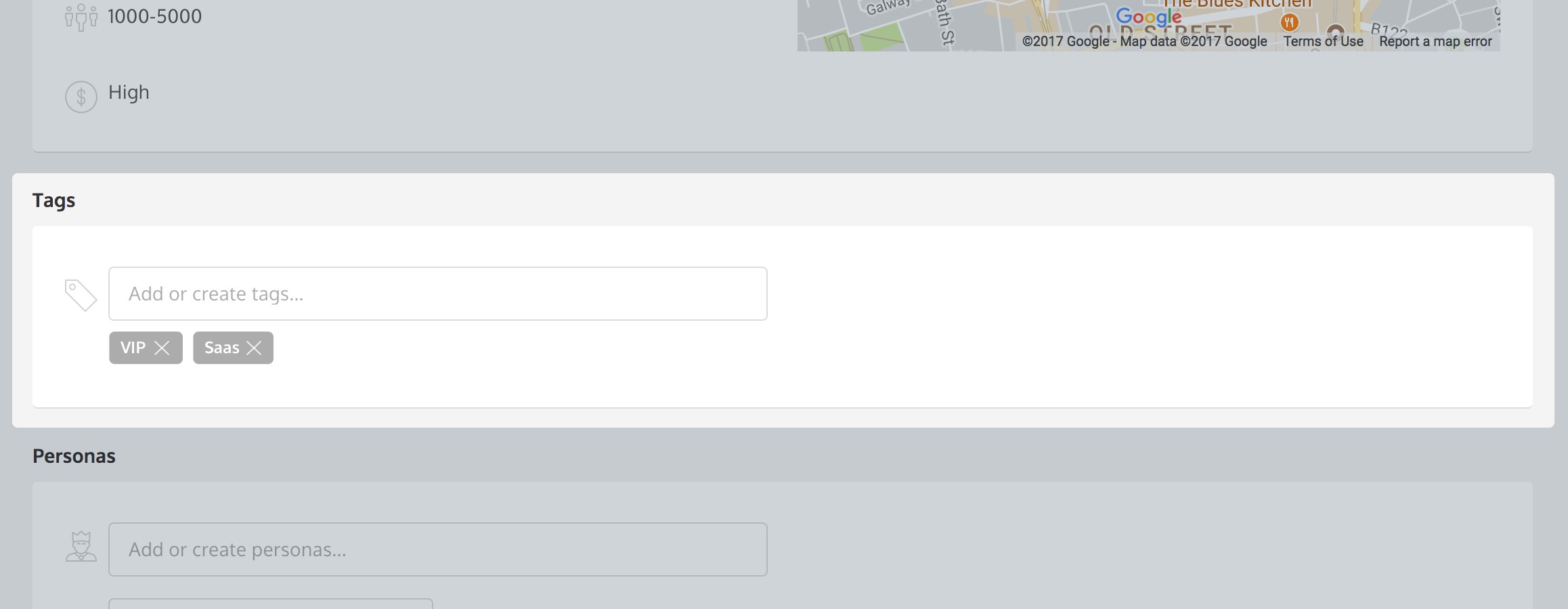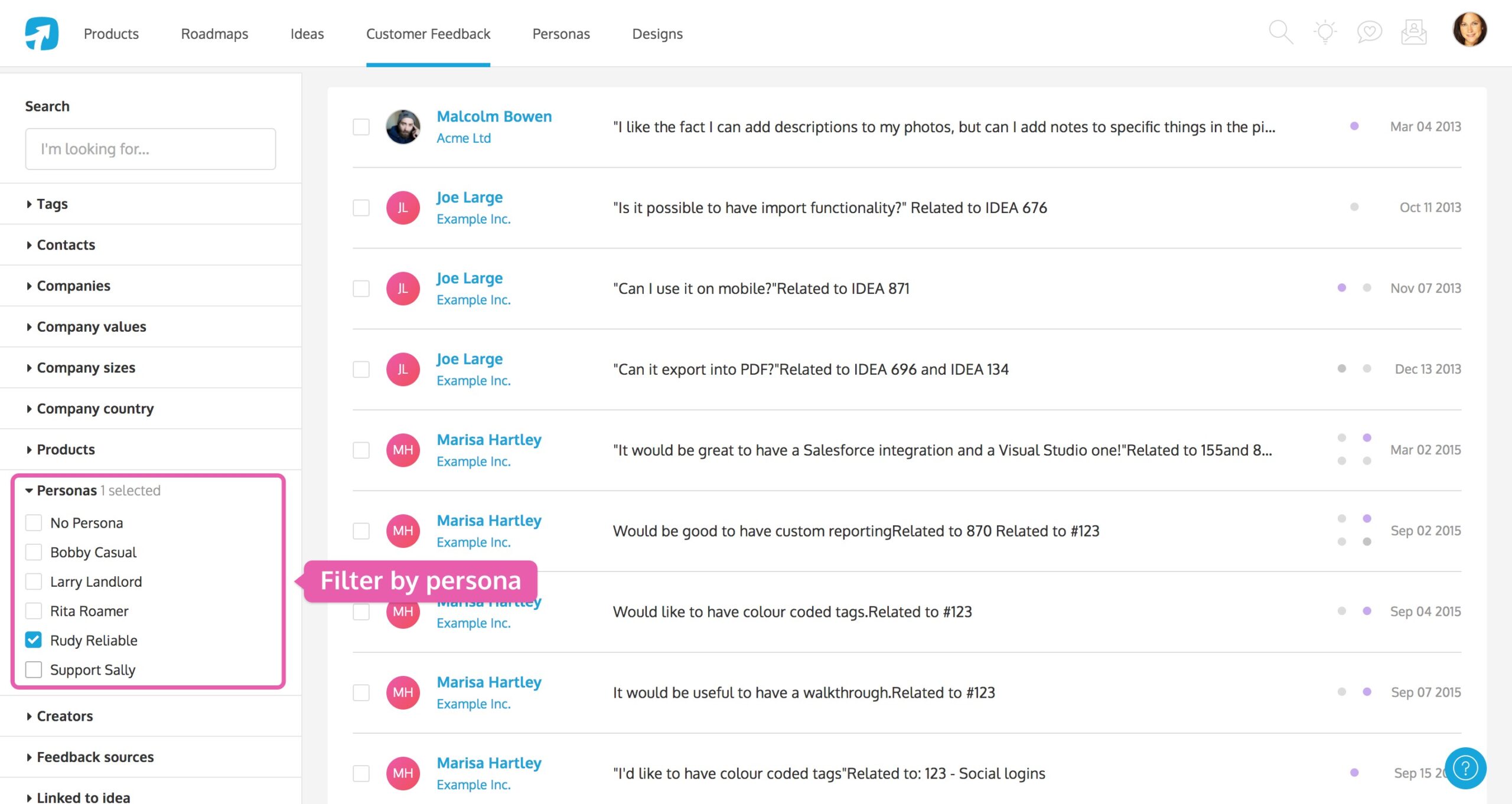How To Make The Most Out Of Contact Profiles
Between CRMs, helpdesks and customer intelligence software, there’s an enormous amount of data about your customers that you could get lost in for hours.
But we’re product people, and none of these tools quite capture the handful of unique criteria we refer back to early and often to help us make product decisions.
That’s why we think Contact Profiles will help you scratch a certain itch by helping you run your customer intelligence specially through a product lens.
The Anatomy of a Contact Profile
A Contact Profile is a record of an individual user or customer designed to help you track the criteria important to you as a product manager.
The Basics

Tags
Tags help you organize customers based on your own criteria that play an important role in your product decisions. (More on that later.)

Personas
Personas help you assign and track real users under the valuable user types you refer to throughout product development.

CRM Link
As you’ll see, contact profiles are not meant to replace a CRM – but we do include a place for you to link to your CRM if you want to keep additional background information handy.

Put customer intelligence into your own hands
With just a handful of individual profiles, you can level up very quickly to deeper, more powerful insights into your customer base.
Go beyond individuals: filter feedback by persona

At a product company, the challenge is to deliver a product that serves many, not just a handful of vocal customers. We’ve introduced the ability to filter feedback by persona to help you fight that tendency to focus on the “small picture.”
With personas, you can zoom out and review customer feedback by segment, so you can understand the needs of a similar group of users as a whole.
So how does this work in practical terms? Here’s an example of how we use this at ProdPad:
We know that our customers, Adam and Liz are Power Users – a very important segment for our business – and we’ve marked them as such in ProdPad.
When they submit new feedback, we’re able to track it along with feedback from all our other Power Users. We can then investigate what advanced functionality Power Users across our customer base are asking for.
Use tags to create custom segments
Tags are really useful for tracking relevant criteria that can’t be captured via our defaults.
Roles and specializations
For example, my job title is UX Designer, but there are dozens of different types of design. If you wanted to track this distinction formally, you could tag me as “Product Design,” “UI Design” or simply “Design.”
This way, you can actually drill down to see what different *kinds* of designers are asking for.

Special groups, industries and fields
You can also use tags to help you quickly filter for feedback on specific product areas, like integrations:
There are a number of subjective ways to track individual users outside of the bio:
- “VIP”: For high-profile users who are uniquely valuable to your business (e.g. celebrities, influencers, etc.)
- Industry/Field: If your product is used across different industries, you can use this tag to help you track insights and use cases specific to that field
- Plans: Get more granular by tagging users by the specific subscription plan/package they’re subscribed to
Reach out to customers for user research
With feedback organized in one place, you can easily reach out to customers to dig up more insights.

Tags and personas are a useful way to reach back out to your customers for user testing, user interviews and other behind-the-scenes research.
If you’re revamping your mobile app, filter down to a list of users that wrote in with feature requests and suggestions and give them a chance to help you get it right.
So what next?
Contact profiles are a standard feature on all our plans – so you can start using this right away!
You can power up these user insights with Company Profiles to help you figure out what to build next at your B2B business.